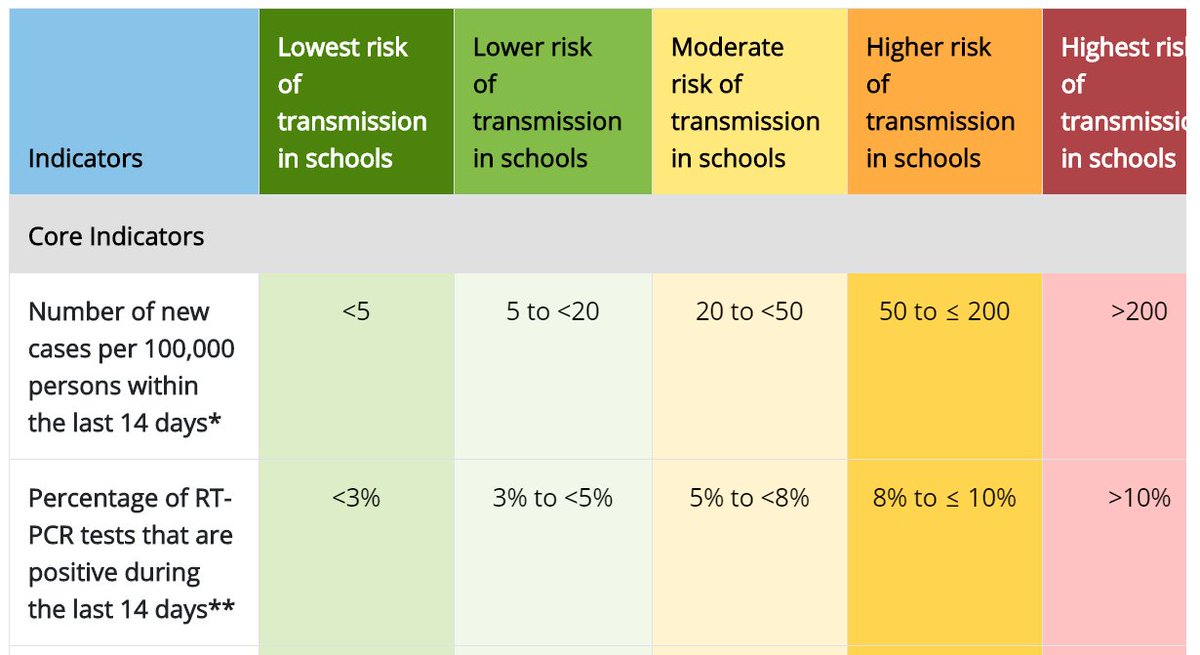I would very much like this to be true!
But I& #39;m not entirely persuaded that the data referenced in this article is robust enough to support the headline. https://www.theatlantic.com/ideas/archive/2020/10/schools-arent-superspreaders/616669/">https://www.theatlantic.com/ideas/arc...
But I& #39;m not entirely persuaded that the data referenced in this article is robust enough to support the headline. https://www.theatlantic.com/ideas/archive/2020/10/schools-arent-superspreaders/616669/">https://www.theatlantic.com/ideas/arc...
The key element that doesn& #39;t seem present in this data - is how the level of transmission in schools relates to level of transmission in the surrounding community. Existing CDC guidelines focus on that as a principal driver of in-school risk.
So if the data are telling us that school transmission is consistently low irrespective of localized transmission levels, that& #39;s a super relevant finding - but isn& #39;t addressed in this data set (only school-based mitigation measures are captured).
Also unclear how representative this data is, as it seems to be ~260 schools with 200k kids self-reporting from across 47 states.
There are around 56m school-age kids in the country; important to understand whether self-reporting may create any selection bias in the sample.
There are around 56m school-age kids in the country; important to understand whether self-reporting may create any selection bias in the sample.
Also important to be cautious about how much we can extrapolate about schools amplifying wider transmission when so many of them in so much of the country remain closed. Again, reinforces why it& #39;s important to look at entire transmission context, not just in-school spread.
I don& #39;t mean any of this as criticism; it& #39;s really important to collect this kind of data. But important too to understand what limitations it has given the collection methods, and given the stakes (in Israel, mass school reopenings are believed to have fueled a case surge).
It& #39;s great that academics are stepping up to try to fill this kind of analytical gap. But it& #39;s also insane that they have to do so; this is the kind of data that CDC and Dept of Ed should be collecting on a more comprehensive and representative basis.
I certainly don& #39;t think we should take a zero-risk approach to school reopenings (the article straw-mans a bit on that point); we should be seeking to accept and manage risk. And the awfulness of remote education (which my household lives every day) is a valid factor to weigh.
But to manage a risk effectively - especially at national scale - we need to understand it. This evidence helps toward that, but I& #39;m not persuaded it& #39;s robust enough to conclude the risk of returning ~1/6 of the US populace back to daily congregate settings is "low."
And as I& #39;ve said before, the fact that school districts have to make these decisions in the dark is a huge preparedness failure. We could have made investments in rigorous research, school-level testing regimes (which are working in some US colleges), school adaptions...
...and prioritizing reopening policies toward schools rather than bars and other high-spread businesses. Instead, led by the feds, the country took none of those steps and forced parents and schools leaders to roll the dice.

 Read on Twitter
Read on Twitter


